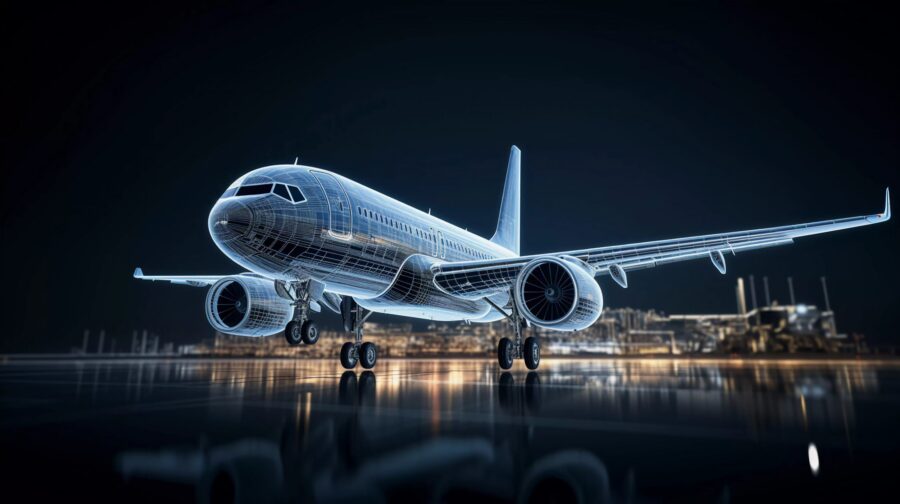
Long before passengers sit back, relax, and enjoy their flight, data has played a critical role in getting them to their seats. It has been a cornerstone of the aviation industry since the early days of air travel.
Indeed, from the early 20th century, data was collected through manual processes such as pilots logging information about weather conditions, navigation, and aircraft performance, and design engineers using this information to improve aircraft design and maintenance procedures. The entire network of manufacturers, large and small, pilots, planners, and investors have relied on data to design, build, and operate aircraft in a safe and efficient way.
Fast-forward to 2023, and many processes are fully automated. Data from fuel sensors is used to develop more efficient engines, airlines use data to improve their customer experience, and researchers use data to develop new ways of reducing aircraft emissions.
Data has been powering aviation since the industry’s inception, and it’s only going to increase in importance.
Using big data to strive for operational perfection
Data is critical for the improvement of airlines and airports’ operations. On-time performance, for example, is a key performance indicator that aviation leaders pay close attention to, to see how well their organisation is operating and performing against competitors.
This isn’t just a performance ranking of airlines and airports. This one metric serves as a valuable tool for self-improvement and a wake-up call to staff within an airline or airport.
Jet fuel prices are typically the most expensive cost item for airlines — and they are increasing, at the time of writing. Even in times of inexpensive fuel, airlines are keen to measure fuel consumption and corresponding GHG emissions. Analysing datasets on weather conditions, air traffic, and aircraft performance helps airlines develop more efficient flight plans and potentially save millions in fuel costs.
A final example to draw on is optimising crew scheduling. Data analysis on crew availability, passenger demand, and flight schedules can create more efficient crew schedules that reduce costs and improve on-time performance.
How is big data currently used in aviation?
The use of data in aviation is widespread and is used to complete routine tasks as well as the highly advanced.
For example, data is used to personalise passenger experiences, such as tailoring in-flight entertainment, or providing real-time information about their flight and destination.
On a more advanced level, airlines and aircraft manufacturers use data to develop predictive maintenance plans, using sensors to determine when maintenance on an aircraft is needed, and before a problem arises. This has positive impacts on cost and aircraft safety and reliability.
One of the principal uses of data in aviation is to manage the flow of real-time air traffic. Air traffic controllers use information about aircraft positions, altitudes, and headings to route aircraft safely and efficiently, and minimise delays. Industry experts have even suggested using data to manage airport arrivals and departures, scheduling aircraft to optimal wind conditions en route — holding back some flights briefly in favour of others with the ultimate goal of an efficient system.
Using data to power advanced aviation analytics
With new technologies such as AI and machine learning emerging at speed, the aviation industry will benefit from new, innovative ways of collecting and analysing data. (And, I might add that Cirium has long been hard at work harnessing these technologies to bring improvements to the industry.)
One area where advanced data collection and analysis will have a major impact is sustainability. Data can be used to improve the fuel efficiency of aircraft and operations and can be used to reduce the environmental impact of aviation, such as noise pollution and CO2 emissions.
Data is also critical in providing executives with the business intelligence they need to make informed decisions. If you have the right systems in place to capture and analyse a wide pool of data from different departments, it gives decision makers a broader view of key internal and external opportunities and challenges.
Big data is critical for effective cost management and operational efficiency in most industries and, in aviation, it has a far reaching, positive impact if it is processed and analysed correctly.
Yes, there are time and cost saving benefits from robust data analytics, but it can also help to improve safety protocols on aircraft, security in airports, and even the carbon footprint of organisations.
With emerging predictive technologies entering many industries, aviation is no exception, and it will be fascinating to see how it is used to improve the processes, functions, and flight plan of the industry.
For more information about Cirium and aviation analytics, visit: www.cirium.com
